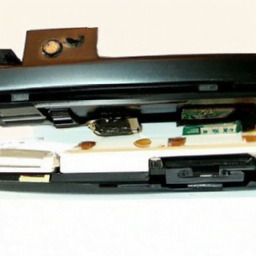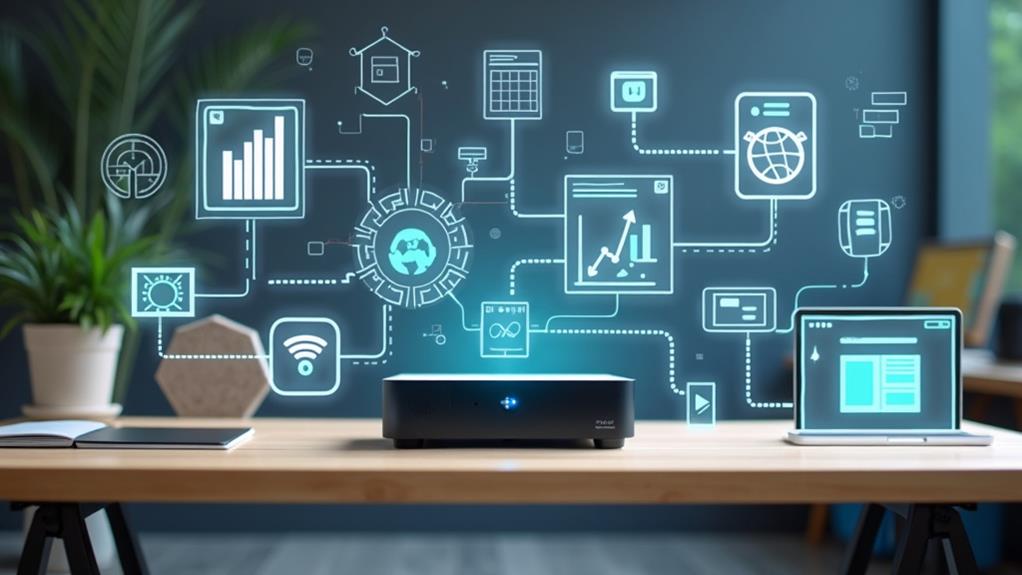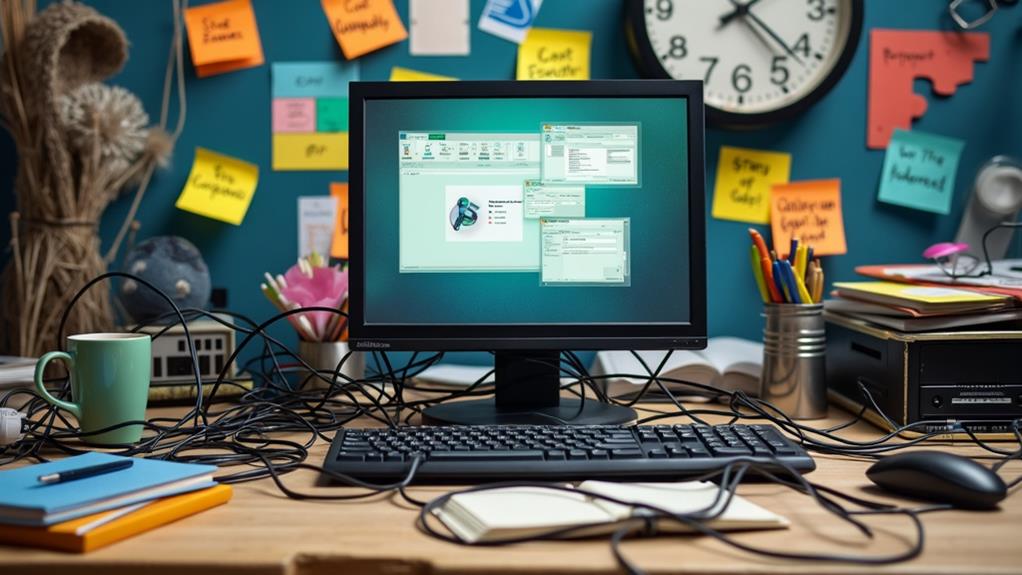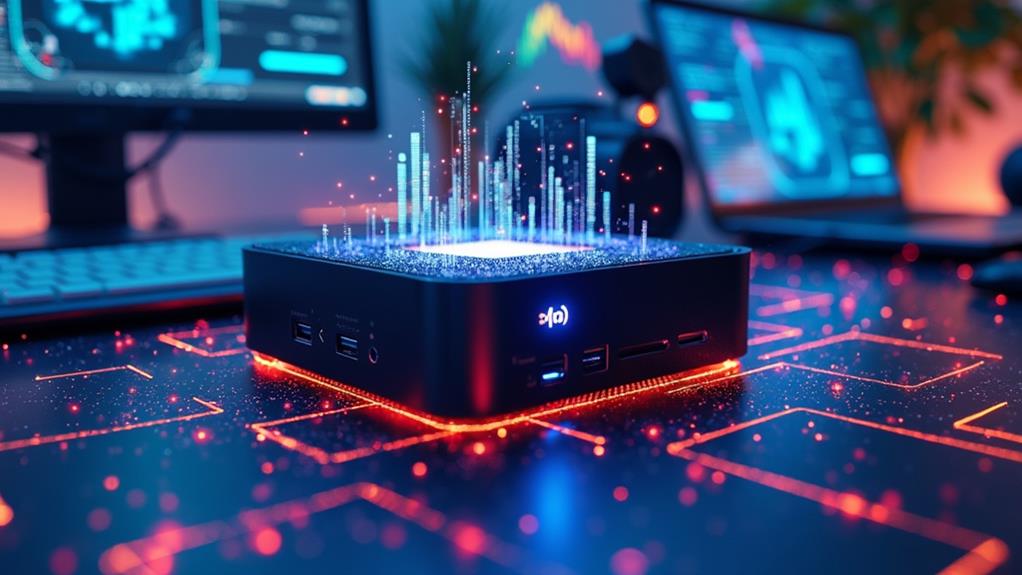



If you’ve ever wondered just how small mini PCs can get, prepare to be amazed. These compact computing machines offer a whole lot of power in a size that seems almost too good to be true. From palm-sized devices that fit in your pocket to tiny boxes that can be mounted on the back of your monitor, mini PCs are redefining what it means to be small but mighty in the world of technology. So, get ready to discover the impressive dimensions of these miniature marvels!
Definition of Mini PCs
What is a Mini PC?
A Mini PC, also known as a small form factor PC, is a compact and portable computer that offers the computing power of a traditional desktop PC but in a much smaller package. These miniaturized computers are designed to have a reduced footprint, occupying minimal space on your desk or in your backpack. They are optimized for space efficiency and portability while still delivering impressive performance for a variety of tasks.
Key characteristics of Mini PCs
Mini PCs are distinguished by their small size and compact design. They typically measure between 4 to 8 inches in length and width, and their height can vary depending on the model and configuration. Despite their diminutive size, mini PCs are equipped with powerful processors, ample storage, and sufficient memory to handle a wide range of computing needs. They often feature multiple connectivity options, including USB ports, HDMI, Ethernet, and wireless connectivity, making them versatile and compatible with various peripherals.
Comparative Sizes of Mini PCs
Sizes of Different Models of Mini PCs
When it comes to the sizes of mini PCs, there is a significant variation among different models and manufacturers. Some mini PCs, like the Intel NUC (Next Unit of Computing) series, are ultra-compact and can be as small as a deck of cards. These extremely tiny mini PCs are ideal for space-constrained environments or for users who prioritize portability above all else.
On the other end of the spectrum, there are slightly larger mini PCs that still retain a compact size but offer more flexibility in terms of hardware customization. These mini PCs, such as the ASUS VivoMini or the Gigabyte BRIX series, typically have a volume comparable to a small shoebox. They provide more room for additional components like dedicated graphics cards, larger storage drives, and extra RAM, allowing for a more powerful computing experience.
How Mini PCs Compare with Regular Desktops
Compared to traditional desktop computers, mini PCs offer a clear advantage in terms of size and portability. While regular desktops consume a significant amount of space, mini PCs can fit comfortably in small offices, dorm rooms, or even serve as media centers in living rooms without dominating the space. This compact size allows users to optimize their work or entertainment areas, especially in scenarios where space is limited or needs are constantly changing.
Moreover, mini PCs are often designed with power efficiency in mind. They feature energy-saving components, such as low-power processors, which not only help reduce electricity bills but also contribute to a greener and more sustainable computing experience. The reduced power consumption makes mini PCs an attractive option for those conscious of their environmental impact.
Evolution in the Size of Mini PCs
Size Changes in Mini PCs Over the Years
Over the years, mini PCs have undergone a remarkable evolution in terms of their size. Initially, early mini PCs were larger and resembled small desktop towers. As technology advanced, manufacturers were able to shrink the form factor, resulting in smaller and sleeker designs while maintaining, and in some cases increasing, performance capabilities.
Recent advancements have led to the development of mini PCs that are so compact they can fit in the palm of your hand. These pocket-sized computers, such as the Intel Compute Stick or the Kangaroo Mobile Desktop, have transformed the concept of what a mini PC can be. They represent the pinnacle of miniaturization, allowing users to bring the power of a full-fledged PC wherever they go.
Technological Advancements That Influenced Mini PC Sizes
The reduction in size of mini PCs can be attributed to various technological advancements throughout the years. One significant advancement is the shrinking size of computer components. The development of smaller and more efficient processors, storage drives, and memory modules has allowed manufacturers to create mini PCs with high-performance capabilities without compromising on size.
Advances in thermal management technology have also played a crucial role in miniaturizing PCs. efficient cooling mechanisms, such as heat pipe designs and low-power heat sinks, ensure that these compact machines can operate without overheating. Additionally, the integration of fanless cooling solutions has eliminated the need for noisy fans, making mini PCs quieter and more pleasant to use.
Furthermore, the rise of solid-state drives (SSDs) has been instrumental in reducing the physical size of mini PCs. SSDs, which have no moving parts, are significantly smaller and more durable than traditional hard disk drives (HDDs). Their compact form factor allows for greater flexibility in mini PC designs and contributes to the overall reduction in size.
Components and Internal Structure of Mini PCs
How Components Fit in Mini PC’s Small Frames
Despite their small frames, mini PCs are ingeniously designed to house all the essential components required for a fully functional computer. These components, including the motherboard, processor, memory modules, storage drives, and cooling systems, are meticulously arranged to maximize space efficiency.
Manufacturers employ clever engineering and layout optimization to ensure that the components are tightly packed within the limited confines of the mini PC casing. Components are strategically positioned to minimize wasted space, with cables and connectors neatly organized to prevent clutter and improve airflow.
Material Science in Mini PC Construction
Materials used in mini PC construction play a crucial role in both the overall size and durability of these compact computers. Lightweight and rigid materials, such as aluminum or magnesium alloys, are commonly employed to construct the chassis. These materials offer excellent strength-to-weight ratios, ensuring that mini PCs are both sturdy and portable.
Additionally, the internal components are carefully selected to strike a balance between performance, power efficiency, and size. Manufacturers often prioritize low-power components that generate less heat, reducing the need for complex cooling systems while still delivering excellent performance.
The Functionality and Performance of Mini PCs
Performances of Mini PCs in Comparison with Their Sizes
Despite their compact size, mini PCs are capable of delivering impressive performance. They are equipped with powerful processors, ranging from energy-efficient options for everyday computing tasks to high-performance options for demanding applications such as video editing or gaming.
Memory capacity in mini PCs can vary from 4GB to 32GB, allowing for smooth multitasking and efficient handling of resource-intensive software. Storage options typically include solid-state drives (SSDs) that offer fast boot times and data access speeds.
Mini PCs also come with integrated graphics solutions or the ability to connect to external displays. While they may not provide the same level of graphical performance as dedicated gaming PCs or workstations, they are more than sufficient for everyday tasks, media consumption, and even casual gaming.
Limitations and Advantages of Compact Sizes
The compact size of mini PCs brings both advantages and limitations. One of the main advantages is their portability. Mini PCs are lightweight and easy to carry, making them ideal for users who require computing power on the go. Whether you’re a business professional needing a compact workstation for presentations or a traveler who wants to bring a versatile computer on your journeys, mini PCs offer unparalleled convenience.
However, due to their small form factor, mini PCs often have limited expandability options compared to their larger desktop counterparts. Upgrading components such as the processor or graphics card may be challenging or even impossible in certain models. Additionally, mini PCs may have fewer USB ports and other connectivity options, which could limit the number of peripherals that can be connected simultaneously.
Despite these limitations, mini PCs provide an excellent solution for users who prioritize space efficiency and portability over extensive hardware customization. Their small size and functionality make them suitable for a wide range of applications, including home entertainment centers, office workstations, digital signage, or even as a compact server for specific tasks.
Design Aesthetics of Mini PCs
How Size Influences Design of Mini PCs
The size of mini PCs undoubtedly influences their design aesthetics. Given their compact nature, mini PCs often feature clean lines, minimalist designs, and sleek profiles. Manufacturers focus on creating visually appealing computers that seamlessly blend into any environment, whether it’s a modern office or a living room entertainment setup.
The reduced size of mini PCs allows for creative and space-saving design solutions. Some models adopt a modular approach, allowing users to stack or connect multiple mini PCs together to create a customized computing setup. This flexibility in design not only maximizes space utilization but also offers the opportunity for future expansion or scalability.
Stylistic Choices in Mini PC’s Design Associated with Their Small Sizes
Stylistically, mini PCs embrace various design choices associated with their small sizes. Many models feature compact and compact shapes with smooth, brushed metal finishes. These design choices exude elegance and a high-quality feel while simultaneously enhancing the device’s durability.
In terms of color options, manufacturers often provide a range of choices to suit individual preferences and blend with different environments. Some mini PCs even incorporate customizable RGB lighting, allowing users to personalize the look and feel of their machines. This attention to detail ensures that mini PCs not only excel in performance but also in style and aesthetics.
Cooling Mechanism in Mini PCs
Challenges in Cooling Mini PCs Due to Their Small Sizes
Cooling mini PCs presents unique challenges due to their small sizes. With limited space for cooling fans and heat dissipation components, maintaining optimal temperatures can be more challenging than in larger desktop computers. The compact design of mini PCs often results in restricted airflow, making heat buildup a potential issue.
Heat is a major concern for mini PCs as it can adversely affect performance and overall system stability. Overheating can cause thermal throttling, where the processor reduces its clock speed to prevent damage from excessive heat. To combat this, manufacturers have devised innovative cooling solutions specifically tailored for mini PCs.
Innovative Cooling Techniques in Mini PCs
Manufacturers employ various innovative cooling techniques to ensure mini PCs remain cool and perform optimally. One popular solution is the use of efficient heatsinks, which are made of materials with excellent heat conductivity such as copper or aluminum. These heatsinks help dissipate heat from critical components, ensuring that the temperature remains within safe limits.
Another cooling technique utilized in mini PCs is the implementation of heat pipes. A heat pipe is a sealed copper tube that contains a small amount of a liquid coolant. It transfers heat away from the heat source and towards a cooling fin stack. The heat is then dissipated into the surrounding air, cooling the components effectively.
Some mini PCs also utilize fanless cooling systems. These systems rely on passive cooling methods such as heat convection or radiation, eliminating the need for noisy fans. Fanless designs not only contribute to a quieter computing experience but also reduce the risk of dust build-up that can hinder the performance of internal components.
Portability of Mini PCs
How the Small Size Allows for Mobility
One of the main advantages of mini PCs is their exceptional portability. The small size and lightweight nature make them highly portable and easy to transport. Whether you need to take your work on the road, set up a temporary workstation, or simply want computing capabilities while traveling, mini PCs offer the ultimate mobility.
Mini PCs can easily fit into backpacks, briefcases, or carry-on luggage, making them perfect for professionals who frequently need to work in different locations. Additionally, their small size is advantageous in environments where space is limited, such as small apartments, shared offices, or classrooms.
Practical Use Cases for Mini PCs Due to Their Small Sizes
The versatility and compact size of mini PCs make them suitable for a wide range of practical use cases. Here are some examples:
1. Home Entertainment Centers: Mini PCs can function as media centers, providing a seamless way to stream movies, TV shows, or music to your living room television. Their small size allows for discreet placement near your entertainment system, reducing cable clutter and creating an uncluttered living space.
2. Digital Signage: Mini PCs are ideal for powering digital signage displays. Their compact form factor allows them to be easily mounted behind or within the display, eliminating the need for additional bulky equipment. Businesses can display advertisements, interactive content, or information in a visually appealing and space-efficient manner.
3. Office Workstations: Mini PCs provide a clutter-free solution for office workstations. Their small footprints make them perfect for compact desk setups. With wireless connectivity and multiple USB ports, mini PCs can connect seamlessly to peripherals such as monitors, keyboards, and mice, creating an efficient and organized workspace.
4. Portable Workstations: Freelancers, creatives, and professionals who frequently move between locations can benefit from the portability of mini PCs. These computers can be easily transported between home, coffee shops, or client meetings, ensuring that productivity is uninterrupted regardless of the location.
5. Education and Classroom Setup: Mini PCs are highly suitable for educational settings. Their compact size reduces the amount of space required for computer labs or classrooms, allowing for more students to be accommodated in limited areas. The portability of mini PCs enables educators to create flexible learning spaces, facilitating collaborative and engaging learning experiences.
Future of Mini PCs
Projected Size Developments in Mini PCs
As technology continues to advance, it is expected that mini PCs will become even smaller and more compact. Future mini PC models may push the boundaries of miniaturization, potentially reaching sizes that are unimaginable today. New manufacturing techniques and material innovations may contribute to further reductions in size without compromising performance.
In addition to size reductions, mini PCs may benefit from enhanced performance and energy efficiency. Future iterations could integrate advanced processors, improved graphics capabilities, and increased memory capacities, allowing mini PCs to handle even more demanding tasks. Simultaneously, they are likely to become even more power-efficient, contributing to greater sustainability and reduced energy consumption.
Advancements That May Further Minimize Size
Several advancements in technology may contribute to further size reductions in mini PCs. One key area is the development of smaller and more efficient computer components, such as processors, memory modules, and storage drives. Continued advancements in nanotechnology and materials science may lead to the creation of microscopic components that offer the same or increased performance within a smaller footprint.
Additionally, advancements in connectivity and wireless technologies may allow for more streamlined designs. As the need for physical ports and connectors diminishes, mini PCs could become even more streamlined and compact. Wireless charging and data transfer technologies may eliminate the need for cables, further reducing the clutter and size associated with typical desktop setups.
Finally, the integration of artificial intelligence (AI) and machine learning technologies may revolutionize the size and capabilities of mini PCs. AI algorithms can optimize performance and energy efficiency by dynamically adjusting the processing power to match the requirements of the task at hand. This intelligent allocation of resources could allow manufacturers to design mini PCs that are both smaller and smarter.
Purchasing a Mini PC
Things to Consider Due to Their Small Size
When purchasing a mini PC, there are a few key factors to consider due to their small size:
1. Purpose: Determine the primary purpose of your mini PC. Are you using it for office work, media consumption, gaming, or as a portable workstation? This will help you determine the necessary specifications, such as processor power, memory capacity, and storage requirements.
2. Connectivity: Consider the number and type of ports and connectors you need. Evaluate your current and future peripheral requirements, such as monitors, keyboards, mice, printers, or external storage devices. Ensure that the mini PC you choose has sufficient ports and compatibility for your needs.
3. Expandability and upgradability: If you anticipate upgrading components in the future, check the mini PC’s specifications and compatibility. While many mini PCs have limited upgradability options due to their small form factor, some models offer more flexibility, allowing for easy expansion or upgrades.
4. Cooling and thermal management: Mini PCs can be prone to heat buildup due to their compact designs. Look for models with efficient cooling mechanisms and ventilation to prevent overheating and ensure optimal performance and longevity.
5. Budget: Set a budget that aligns with your requirements. Mini PCs can vary significantly in terms of price depending on the performance, features, and brand. Determine your budgetary constraints and prioritize the features that are most important to you.
Top Mini PCs Based on Size and Performance
Intel NUC (Next Unit of Computing): The Intel NUC series offers a wide range of mini PCs that strike a balance between compact size and high performance. These mini PCs are highly customizable, allowing users to choose the specifications that best suit their needs. The Intel NUCs are known for their reliability, performance, and extensive connectivity options.
ASUS VivoMini: The ASUS VivoMini series combines small form factors with impressive performance. These mini PCs feature sleek designs and offer various configurations to cater to different users. With options for Intel Core processors and easy upgradability, the ASUS VivoMini is a versatile choice for both professional and personal use.
Gigabyte BRIX: The Gigabyte BRIX series delivers powerful performance in an ultra-compact form factor. These mini PCs offer a range of options, from entry-level models to high-performance units, ensuring there is a BRIX for every need. Gigabyte BRIX mini PCs are known for their durability, reliability, and energy-efficient designs.
In conclusion, mini PCs have revolutionized the computing industry by offering powerful performance in an incredibly small and portable package. These compact computers are versatile, capable of fulfilling various needs across different environments. With advancements in technology, we can expect mini PCs to continue to shrink in size while maintaining or even enhancing their performance capabilities. As the demand for mobility and space efficiency increases, mini PCs are poised to become the go-to choice for users who value power, portability, and style.
Disclosure: As an Amazon Associate, I earn from qualifying purchases.






